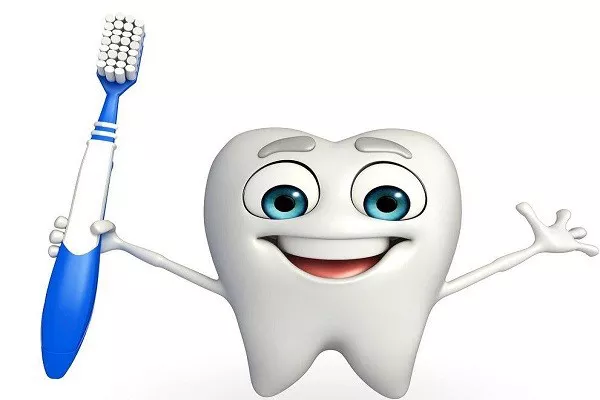When it comes to dental restorations, there are several options available. Two of the most popular options for replacing missing teeth are dental bridges and implants. However, many people don’t know the differences between the two. In this article, we’ll explain what dental bridges and implants are, outline the procedures involved in getting them, discuss the benefits and drawbacks of each, compare their costs, and help you decide which option might be right for you.
Dental Bridges
A dental bridge is a fixed dental restoration that replaces one or more missing teeth. Bridges are typically made up of two or more crowns for the teeth on either side of the gap (“abutment teeth”), with a false tooth or teeth (“pontic”) in between. There are several types of dental bridges, including traditional bridges, cantilever bridges, Maryland bridges, and implant-supported bridges.
1. Procedure for Getting a Dental Bridge
- Your dentist will first prepare the abutment teeth by removing some of the enamel to make room for the crowns.
- Next, your dentist will take impressions of your teeth and send them to a laboratory where your bridge will be custom-made.
- While your bridge is being made, your dentist will place a temporary bridge to protect your prepared teeth.
- Once your permanent bridge is ready, your dentist will remove the temporary bridge and cement the permanent bridge into place.
2. Benefits and Drawbacks of Dental Bridges
- Bridges are a quicker and less invasive procedure than implants, as they don’t require surgery.
- Bridges can improve your ability to chew and speak properly.
- Bridges are generally less expensive than implants.
- However, bridges don’t last as long as implants, usually lasting only around 10-15 years before needing to be replaced.
- Bridges also require the abutment teeth to be trimmed, which can weaken them and potentially lead to future dental problems.
3. Cost of Dental Bridges
- The cost of a dental bridge varies depending on the type of bridge and the number of teeth being replaced.
- On average, traditional bridges can cost between $500 and $1,500 per tooth, while implant-supported bridges can cost between $2,000 and $5,000 per tooth.
Dental Implants
A dental implant is a surgical component that is used as a replacement for the root of a missing tooth. Implants are typically made up of three parts: the implant itself, the abutment (which connects the implant to the crown), and the crown (the part of the implant that looks like a real tooth). There are several types of dental implants, including endosteal implants, subperiosteal implants, and mini implants.
1. Procedure for Getting a Dental Implant
- Your dentist will first surgically place the implant into your jawbone.
- Next, you’ll need to wait several months for the implant to fuse with your jawbone in a process called osseointegration.
- Once the implant has fused with your jawbone, your dentist will place the abutment and crown onto the implant.
2. Benefits and Drawbacks of Dental Implants
- Implants are the most durable and longest-lasting option for replacing missing teeth, often lasting a lifetime with proper care.
- Implants are also the most natural-looking option, as they look and feel just like real teeth.
- Implants also don’t require any additional maintenance beyond regular brushing and flossing.
- However, implants are more expensive than bridges and require surgery, which can be a deterrent for some patients.
3. Cost of Dental Implants
- The cost of a dental implant varies depending on the type of implant and the number of teeth being replaced.
- On average, a single dental implant can cost between $3,000 and $5,000.
Differences between Dental Bridges and Implants
Now that we’ve discussed the procedures, benefits, drawbacks, and costs of dental bridges and implants, let’s compare the two options directly.
1. Procedure Process
- Bridges are a quicker and less invasive procedure than implants, as they don’t require surgery.
- Implants require surgery to place the implant into the jawbone, followed by a several-month healing process before the abutment and crown can be placed onto the implant.
2. Durability and Lifespan
- Bridges last around 10-15 years before needing to be replaced.
- Implants can last a lifetime with proper care.
3. Maintenance and Care Requirements
- Bridges require special flossing tools to clean underneath the false tooth or teeth.
- Implants only require regular brushing and flossing like natural teeth.
4. Cost
- Bridges are generally less expensive than implants.
- However, implants are the most durable and longest-lasting option for replacing missing teeth.
Which is Right for You?
Choosing between a dental bridge and implant depends on several factors, including your budget, the condition of your remaining teeth, and your personal preference. Here are some factors to consider when making your decision:
1. Number of missing teeth
If you’re only missing one or two teeth, an implant might be a better option for you. However, if you’re missing several teeth in a row, a bridge could be a more practical solution.
2. Health of remaining teeth
If your surrounding teeth are weak or have large fillings, your dentist may recommend a bridge instead of an implant to avoid putting extra pressure on those teeth.
3. Bone density
In order to support an implant, you need to have sufficient bone density in your jaw. If you don’t have enough bone, you may need a bone graft before getting an implant.
4. Cost
Bridges are generally less expensive than implants, but they also don’t last as long. Consider your long-term budget when making your decision.
5. Personal preference
Some people prefer the natural look and feel of an implant, while others prefer the convenience and simplicity of a bridge.
Ultimately, the best way to decide between a dental bridge and implant is to talk to your dentist or a dental specialist. They can evaluate your specific situation and help you choose the option that will give you the best results.
When deciding between a dental bridge and implant, it’s important to understand the differences between the two. Bridges are a quicker and less invasive procedure than implants, but they don’t last as long. Implants require surgery and are more expensive, but they’re also the most durable and longest-lasting option for replacing missing teeth. Ultimately, the choice depends on your personal preferences and the specifics of your situation. Talk to your dentist to determine which option is right for you.
Recommended Article: Dental Implants or Veneers?










![Cosmetic Dentistry Market Size, Share | Global Report [2032]](https://www.padmel.com/wp-content/uploads/2025/04/Cosmetic-Dentistry-Market-Size-Share-350x250.webp)





















